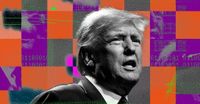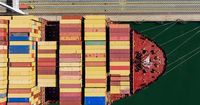On September 2, 2025, the United States Court of Appeals for the Federal Circuit delivered a seismic jolt to the nation’s trade policy, ruling that a broad swath of President Donald Trump’s tariffs were illegal. The decision, which scrutinized the White House’s use of the International Emergency Economic Powers Act (IEEPA) to impose sweeping tariffs on goods from more than 90 countries, has sent shockwaves through financial markets, global supply chains, and the political landscape. But for now, the tariffs remain in effect, with the Trump administration immediately signaling its intent to appeal to the U.S. Supreme Court.
The court’s opinion was unambiguous: while the IEEPA grants the president significant authority during a declared national emergency, it does not explicitly empower the executive branch to impose tariffs or taxes. As the ruling stated, "The statute bestows significant authority on the President to undertake a number of actions in response to a declared national emergency, but none of these actions explicitly include the power to impose tariffs, duties, or the like or the power to tax." According to the court, Congress has always been explicit when granting tariff authority in other statutes, such as the Tariff Act of 1930 or Section 201 of the Trade Act—language that was notably absent from the IEEPA.
Despite this legal rebuke, the tariffs will remain in place for now, thanks to a stay that lasts until at least October 14, 2025. The Trump administration responded swiftly, with President Trump announcing plans to seek an expedited Supreme Court review and calling an emergency White House meeting for September 3 to discuss the next steps. Treasury Secretary Scott Bessent echoed the administration’s confidence, telling reporters he believes the Supreme Court will ultimately uphold the tariffs, but also revealing that contingency plans are in place should the high court rule otherwise.
For American businesses, especially those in the shipping and logistics sectors, the ruling has brought more questions than answers. According to CNBC, Paul Brashier, vice president of global supply chain at ITS Logistics, said, "Right now, we have not heard anything much or seen any changes." He explained that most shippers are waiting for the Supreme Court’s final decision, with many having "frontloaded" imports earlier in the year to avoid potential tariff hikes. "Most shippers are awaiting the appeal to the U.S. Supreme Court and its final decision. There has been a lot of frontloading as well so impact for now should be minimal," Brashier added.
Yet, the uncertainty is palpable. Mike Short, president of global forwarding at C.H. Robinson, described a flurry of calls from customers seeking clarity on the likelihood of Supreme Court intervention and the mechanics of potential tariff refunds. "This decision concerns reciprocal tariffs on goods from most countries, in addition to drug-related tariffs affecting imports from Canada, Mexico, and China. These tariffs account for the lion's share of the duty outlay for many of our customers, so despite no immediate change, they're eager to know and plan for the 'what ifs,'" Short told CNBC.
The stakes are enormous. The U.S. government has collected more than $30 billion per month in trade duties under these tariffs, with Treasury Department data showing $142 billion in tariff revenue so far in fiscal year 2025. If the courts ultimately order refunds, the process could be daunting. Short explained that Customs might process refunds automatically, or, in a more complex scenario, brokers would have to secure them—potentially doubling their workload overnight. Dan Anthony, president of Trade Partnership Worldwide, noted, "Blanket refunds are fairly straightforward: all affected imports have an IEEPA-specific code and related tariff amount that should allow for automated refunds of payments. An individual request process would make it infinitely more complex."
The implications extend beyond government agencies to businesses large and small. Small importers using third-party logistics providers like UPS, FedEx, or DHL could face significant delays, as refunds would first go to the third party before being passed on to the actual importer. "This can lead to significant delays for actual importers even if the government process goes off without a hitch," Anthony pointed out.
Meanwhile, Wall Street has been quick to react. As reported by Bloomberg and CNBC, U.S. stocks tumbled on the first trading day after the ruling, with the Nasdaq composite closing 0.8% lower, the S&P 500 down 0.7%, and the Dow Jones Industrial Average falling by 249 points. Investors are jittery over the possibility that more than $120 billion in tariff revenue collected so far this year might need to be repaid. At the same time, long-term Treasury yields spiked to 4.97% for 30-year bonds and 4.30% for 10-year Treasuries—raising borrowing costs for the government at a time when the national debt stands at a staggering $37 trillion. Mark Luschini, Chief Investment Strategist at Janney Montgomery Scott, analyzed the bond market’s reaction, noting that potential refunds could force the government to issue more debt at higher interest rates.
The business world is also grappling with the ongoing volatility. Alan Baer, CEO of OL USA, remarked that companies are facing "a lot of mixed signals as product ordered and arriving in October is already on the water." He added, "I don't see the White House giving up on collecting the $30 billion-plus in taxes." Most companies, Baer said, will remain cautious with their forward ordering unless they see a clear uptick in demand.
For the time being, legal and trade experts are advising companies not to make hasty changes to their sourcing strategies. Josh Teitelbaum, senior counsel at Akin and a former U.S. Commerce official, told Reuters, "Companies should not be shifting their sourcing based on what they think the Supreme Court will say, it's just too uncertain." He warned that if the Court finds the President exceeded his authority, new tariffs could be imposed under different statutes—each with its own requirements and limitations.
The scope of the tariffs is vast. According to Michael Lowell, partner at Reed Smith, the Harmonized Tariff Schedule of the United States contains over 11,000 subheadings, with only about 5% exempt from the reciprocal tariffs. Every code is subject to the "fentanyl" tariffs on Canadian-, Chinese-, and Mexican-origin goods unless covered by the United States-Mexico-Canada Agreement. Section 232 tariffs, which target around 800 codes, have also been expanded to cover a wide range of products.
Industry voices are warning of the broader economic toll. The Institute for Supply Management reported that the U.S. manufacturing sector has contracted for six straight months, with a trucking industry respondent describing the situation as "much worse than the Great Recession of 2008-2009." A food and beverage company noted that "everything ... is about to get significantly more expensive" due to high tariffs, while a computer industry firm lamented, "Tariffs continue to wreak havoc on planning/scheduling activities." Even consumer-facing giants like McDonald's are feeling the pinch. CEO Chris Kempczinski told CNBC that the company has observed "a two-tier economy" with lower- and middle-income consumers "feeling under a lot of pressure right now."
Despite the legal drama and market turbulence, some experts urge perspective. Felicia Pullam, former executive director at U.S. Customs and Border Protection, said, "It will not sink the economy. Claims to the contrary sound more like desperation." She emphasized that while refunding tariffs would add to the deficit, the government could manage the process over time, and any loss in court would not undo trade deals, which are mostly frameworks rather than formal treaties.
As the legal battle heads toward the Supreme Court and policymakers scramble to devise alternatives, one thing is clear: tariff volatility is now the new normal for American businesses and global markets alike. With the outcome still hanging in the balance, companies, investors, and consumers are all bracing for what comes next.


